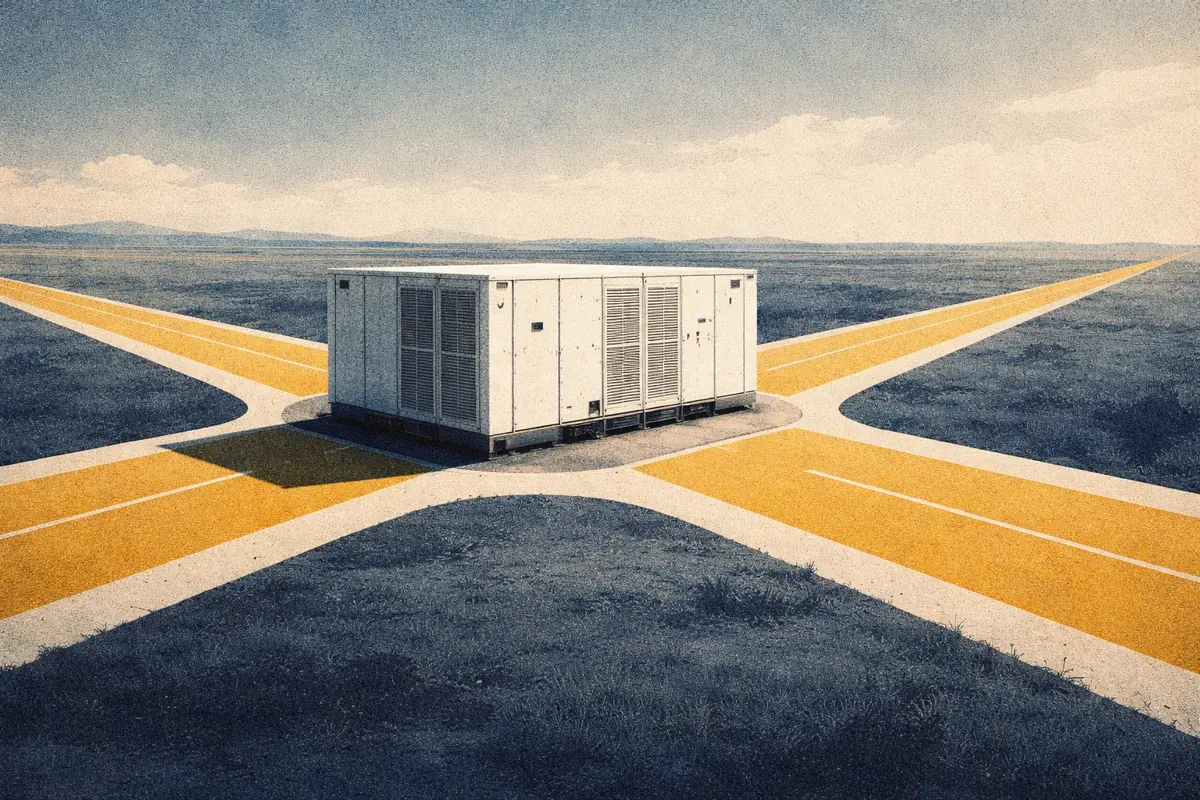Balancing Reserve: what is the final design of the new service?
Balancing Reserve: what is the final design of the new service?
The new Balancing Reserve service is due to launch on March 12th 2024, following final approval by Ofgem on February 8th. The service is being introduced to reduce the costs of balancing the system and provide better visibility of reserve volume to the ESO. A first design of the service had previously been rejected by Ofgem, with changes announced last August. These changes make it easier for battery energy storage to participate in the market.
But what are the final requirements to participate in the new service? And how will the market operate?
Balancing Mechanism-registered flexible units can participate
The Balancing Reserve service will be available to Balancing Mechanism-registered units larger than 1 MW. Units providing Balancing Reserve will need to provide a change in generation or demand for up to 30 minutes when instructed by the ESO. These instructions will be sent via the Balancing Mechanism. Units must be able to ramp to their contracted output within 10 minutes.

Balancing Mechanism-registered batteries will be able to provide the service
All battery BMUs that meet the above requirements will be able to provide the service. When Balancing Reserve launches, it will be bi-directional, meaning units can provide both positive and negative services simultaneously.
Here are the key things that batteries seeking to participate in the market should consider:
- Stacking Balancing Reserve with frequency response services will be allowed for services in different directions. For example, stacking Dynamic Containment High with Positive Balancing Reserve.
- It will not be possible to stack services in the same direction (e.g. Dynamic Containment Low and Positive Balancing Reserve). The ESO has said it will consider allowing this in the future.
- Batteries must manage their state of charge when contracted in the service. Units must store enough energy to provide 30 minutes worth of energy. This means a one-hour battery must be at 50% SoC to provide its full rated power in the service.
- Battery availability will be monitored through the submission of MEL and MIL data. This may require a change in how these are calculated for battery energy storage, as they currently only provide a view of 15 minutes' worth of energy delivery.
- Failure to deliver the contracted availability or a dispatch instruction will trigger an Event of Default (EOD). When a unit triggers an EOD, it will forfeit its availability payment for the entire settlement period.
Balancing Reserve will allow the ESO to ensure grid security at a lower cost
The new service is designed so that the ESO can avoid high costs to balance the grid at times when generation margins are tight. This currently happens on occasions when wind generation and demand are both high.
Wind generation can experience sudden drops, for example due to high wind cut-out, causing a 2 GW drop in supply. The ESO need to maintain enough flexible generation to cover this and meet demand. But, they currently do not know if flexible units like batteries will be available when needed.
CCGTs are often available to provide this flexibility, but at peak times may be running at full power with no room to turn up. As a result, the ESO are forced to turn on expensive gas or coal power stations to ensure they can maintain adequate reserve. This has historically resulted in the ESO spending up to £6,000/MWh to secure reserve when cheaper options may have been available.

While the focus has historically been on upwards reserve, the same flexibility is also needed to turn down. Therefore Balancing Reserve will have both a positive (turn-up) and negative (turn-down) service.
400 MW of Balancing Reserve will be procured at launch, but this is expected to increase
The ESO has announced that the initial requirement volume for the service will be a fixed 400 MW in each direction. This is at the lowest end of the expected 400 - 2500 MW requirement volume. This requirement will change as the service matures.

Requirement volumes will shift to a fixed requirement that follows a typical daily demand shape (e.g. higher requirement at peak times, lower overnight). The market will eventually move to a dynamic requirement, allowing the ESO to set requirement volumes for each settlement period, changing daily.
Balancing Reserve payments are split into two parts
The service aims to provide the control room confidence of how much reserve is available across the next 24 hours. This will allow the ESO to make better-informed decisions when instructing units within the Balancing Mechanism. Balancing Reserve provides contracts to units via an availability payment mechanism to do this. Meanwhile, actual dispatches receive a utilization payment.
Availability payments
An availability payment is made to winners of Balancing Reserve contracts that provide positive or negative reserve. This is paid in £/MW/h, and prices are determined via a pay-as-clear, day-ahead auction. This element gives the ESO greater visibility of the reserve it has to balance the grid.
Balancing Reserve will procure contracts by settlement period instead of EFA block in the frequency response markets. Contracts and the service clearing price are determined via a day-ahead auction.
This auction runs at 8:45 am, 35 minutes before EPEX day-ahead wholesale gate closure. This allows operators to adjust their wholesale positions depending on whether they secure Balancing Reserve availability contracts.

The same Enduring Auction Capability platform for procuring frequency response contracts will be used for Balancing Reserve, although the two won’t be connected. Operators will be able to submit up to 100 baskets, and bids can be grouped across multiple settlement periods if necessary.
Utilization payments
The second part of Balancing Reserve payments is utilization payments. Units providing Balancing Reserve submit Bids and Offers in the Balancing Mechanism. Those instructed to import or export power will then be paid (or have to pay) for the energy they deliver in £/MWh.
These dispatches will compete with other Balancing Mechanism actions that provide the same response. So if a BMU that isn't contracted via Balancing Reserves can balance the system at a cheaper price, the ESO will use it.
Balancing Reserve may not have a significant affect on battery skip rates
The introduction of Balancing Reserve brings a new ancillary service to the market, with additional volume to compete for. Contracts for the service could provide value to batteries via the availability payments they provide.
It remains to be seen whether the service will improve the utilization and skip rates of batteries in the Balancing Mechanism. The primary reason for introducing the service is to shift the securing of reserve to a market-based, contractual approach. This will reduce, or even eliminate, the need for ESO to take some of the expensive actions it has done in the Balancing Mechanism in the past. In turn, this will reduce battery skips that occur for this reason - ESO call these ‘strategic skips’.
However, a contract for Balancing Reserve does not necessarily lead to increased dispatches. These actions are taken within the Balancing Mechanism, in competition against other technologies. The way these are dispatched will not change with the introduction of Balancing Reserve. If the service does result in changes to these dispatch processes, then the service may increase utilization for any batteries contracted.







